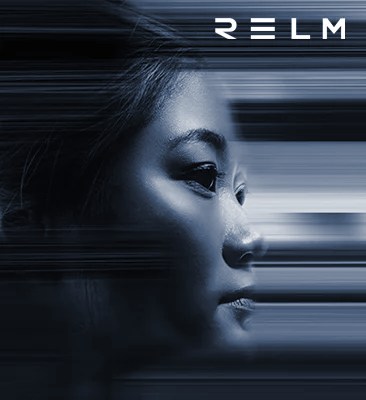
Insight
INSURANCE DAY VIEWPOINT: INSURANCE HAS A CRITICAL ROLE IN DEVELOPMENT OF CRYPTOCURRENCY SECTOR
Digital assets businesses such as cryptocurrency custodians, exchanges and other digital asset services providers are at the forefront of innovation. The insurance industry, in contrast, often sees these innovative businesses as a source of unquantifiable risk based on a lack of understanding and historical loss data.
Cryptocurrency businesses need protection for emerging risks. More responsive insurance solutions are needed to support innovation rather than penalise it, writes Relm’s managing director, Joe Ziolkowski.
Digital assets businesses such as cryptocurrency custodians, exchanges and other digital asset services providers are at the forefront of innovation. The insurance industry, in contrast, often sees these innovative businesses as a source of unquantifiable risk based on a lack of understanding and historical loss data.
As a sector that exists to embrace risk, the insurance industry’s ability to accommodate new classes of business is often at odds with the more rapid pace of business innovation.
Digital asset businesses are an example of an emerging risk class that has suffered from a lack of insurance capacity. As this sector continues to mature, it is in need of insurance protection for a range of risks just like any other well-run business such as directors’ and officers’ liability insurance, professional liability, fraud and cyber covers. More specialised insurance products include protection for digital asset custodians or coverage to protect depositors that function similar to that offered through the Federal Deposit Insurance Corporation (FDIC) or Securities Investor Protection Corporation (SIPC) in the U.S.
Despite the certainty that digital asset businesses are here to stay, the traditional insurance marketplace has found it challenging to gain the confidence to deploy meaningful and dependable capacity in the absence of operating history and loss experience.
I believe this void in coverage presents a significant opportunity to the international insurance market to provide selective capacity in order for the digital asset sector to continue to mature.
In fact, it is possible by underwriting in a selective and measured way to offer insurance cover to diverse emerging sectors such as digital asset businesses.
An absolutely critical component of the underwriting process is client engagement. Their willingness to provide transparency with respect to operations as well as internal and external risks enhances an underwriter’s ability to make informed decisions. Combining client engagement with modelling based on likely scenarios rather than a limited operating track record makes it possible to provide quality enterprises that maintain effective governance controls and risk management, with a comprehensive insurance product.
Know your insured
The crypto industry has a bad reputation in the media. At The World Captive Forum recently held in February, keynote speaker, Mark Lanterman, former member of the U.S. Secret Service Electronic Crimes Taskforce quipped: “Not everybody who uses crypto is a criminal, but all criminals use crypto.”
This perspective sums up much of the suspicion and caution surrounding cryptocurrency. Fraud, money laundering and other financial crimes are risks all operators in the digital asset space face. However, these criminals are a small part of an ever-expanding digital asset ecosystem. In a report issued by Chainalysis in January, 2020, “The 2020 State of Crypto Crime” approximately 1% of all Bitcoin activity in a given month is attributed to criminal activity facilitated by the most active Over The Counter (OTC) crypto brokers.
Some of the innovators creating crypto-based businesses do not have a background in regulated businesses such as banking or in the safe custody of digital assets. Naïveté has in some instances led to failure or outright fraud. To protect against such risks, it’s vital that insurers are confident that effective corporate governance policies, processes, systems and controls are in place.
Insurers must use effective and robust Know Your Customer (KYC), Know Your Transaction (KYT) and anti-money laundering (AML) checks. Unique to the digital asset space and its reliance on blockchain technology, highly effective tools are available and should be utilized to confirm the provenance of all crypto assets. Digital asset businesses should have cradle to grave processes for how transactions are made, facilitated and confirmed through internal audit. We also expect proper data security and disaster recovery procedures, as well as policies for avoiding and/or disclosing conflicts of interest and promoting corporate ethics.
It is also important that responsible individuals are appointed to the key corporate governance roles that have satisfied fitness and propriety standards. And vital to confirm, not just the existence of policies and procedures surrounding suspicious activity reports, but to be able to confirm the implementation and adherence to these policies in day-to-day operations. As an alternative to high premiums in this sector, utilizing a more hands-on underwriting approach allows a reasonable premium to be charged relative to the risk.
Driving Innovation
The cryptocurrency sector is evolving fast and so is the legal and regulatory environment.Having said that, international regulatory frameworks for digital assets are, at best, in their early stages, while in many jurisdictions digital assets remain unregulated altogether. In the US, initiatives abound at both the state and federal level as well as with self-regulatory organizations to try and create a consistent legal approach to the varied aspects of the digital asset industry. Most recently, a bill called the Crypto Currency Act of 2020 was introduced at the end of 2019 in an effort to clarify which Federal agencies (FinCEN, SEC, CFTC) regulate digital assets, These efforts come on the heels of a spike in US class action lawsuits involving digital asset companies which highlighted problems related to misrepresentation, fraud and other alleged crimes against investors.
As foreign jurisdictions such as the EU, Russia and China seek to adopt laws, regulations and directives surrounding digital assets, significant questions remain regarding consistency of regulatory framework from one country to the next. A lack of regulatory clarity and the international nature of blockchain technology yields D&O and E&O exposures that are unique to the digital asset space. Nonetheless, as the regulatory landscape continues to evolve, the prospect for the widespread adoption of digital assets and those operating within the sector continues to improve.
I believe that further engagement from the regulatory authorities is likely to offer a significant opportunity for the development of insurance. Increasing compliance requirements will make it untenable for less well-run businesses to continue and therefore improve the position of the best digital asset firms. Those firms that remain are likely to seek better protection for their business via insurance and hopefully should find it easier to access cover.
Recent moves by Bermuda, Canada, France and Australia imposing professional indemnity requirements on digital asset businesses seeking a license are a good example of how regulatory demands will shape the sectors’ insurance needs. In the US, efforts are underway to clarify which operators need licenses, certifications or registrations to create or trade digital assets.
Well-run digital assets businesses that are keen to respond to such demands are the next big insureds of tomorrow and I believe that insurance sector should be ready to respond.


























